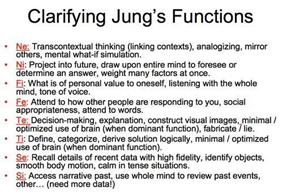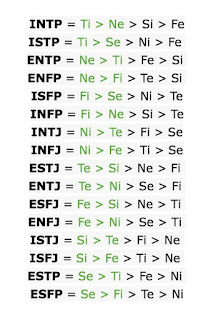Myers Brigg types and Cognitive Functions
October 22, 2021
Finding out what kind of personality type you or someone else are is a common interest many have these days. There is a satisfaction and delight in seeing what kind of person you may be perceived as, or a description on hand that describes who you are as a person. Many people have these thoughts roaming around about who they are, and they use astrology or other forms of personality descriptions to get that sense. Myers Brigg and cognitive functions are of similar taste and have been growing in popularity!
Myers Brigg is based on a theory by the psychiatrist, Carl G Jung. He speculated that people use four principal psychological functions. However, a common misconception about the developed types is that it is all about characteristics or traits a person has, but this is false. It is all about the sensation, intuition, feeling and thinking a person goes through. The branch it is categorized in is known as “typology”, which refers to different typing systems. Yes, there are multiple systems that type people, but Myers Brigg tends to be the one with the most attention. The cognitive functions that make up Myers Brigg types is how your brain works and how you make decisions as a person. Each person make decisions in different ways and cognitive functions distinguish exactly that.
Cognitive functions are separated into 8 different mental abilities. Your Myers Brigg type is made up of 4 of the 8. The types are introverted feeling, extroverted feeling, introverted sensing, extroverted sensing, introverted intuition, extroverted intuition, introverted thinking, and extroverted thinking. Of these 8, each person has a dominant, which is the main function your brain uses. Your dominant should be the strongest and most well-developed function you use. Next, is the auxiliary function, which is almost like “the second in command” and supports your main function. The third function is the tertiary, which is typically under development and may come to you later in life, or it could be very developed depending on the person. Lastly is the inferior function, which is typically manifested in times of need or stress. In these times, it can overpower the dominant or auxiliary functions.






























